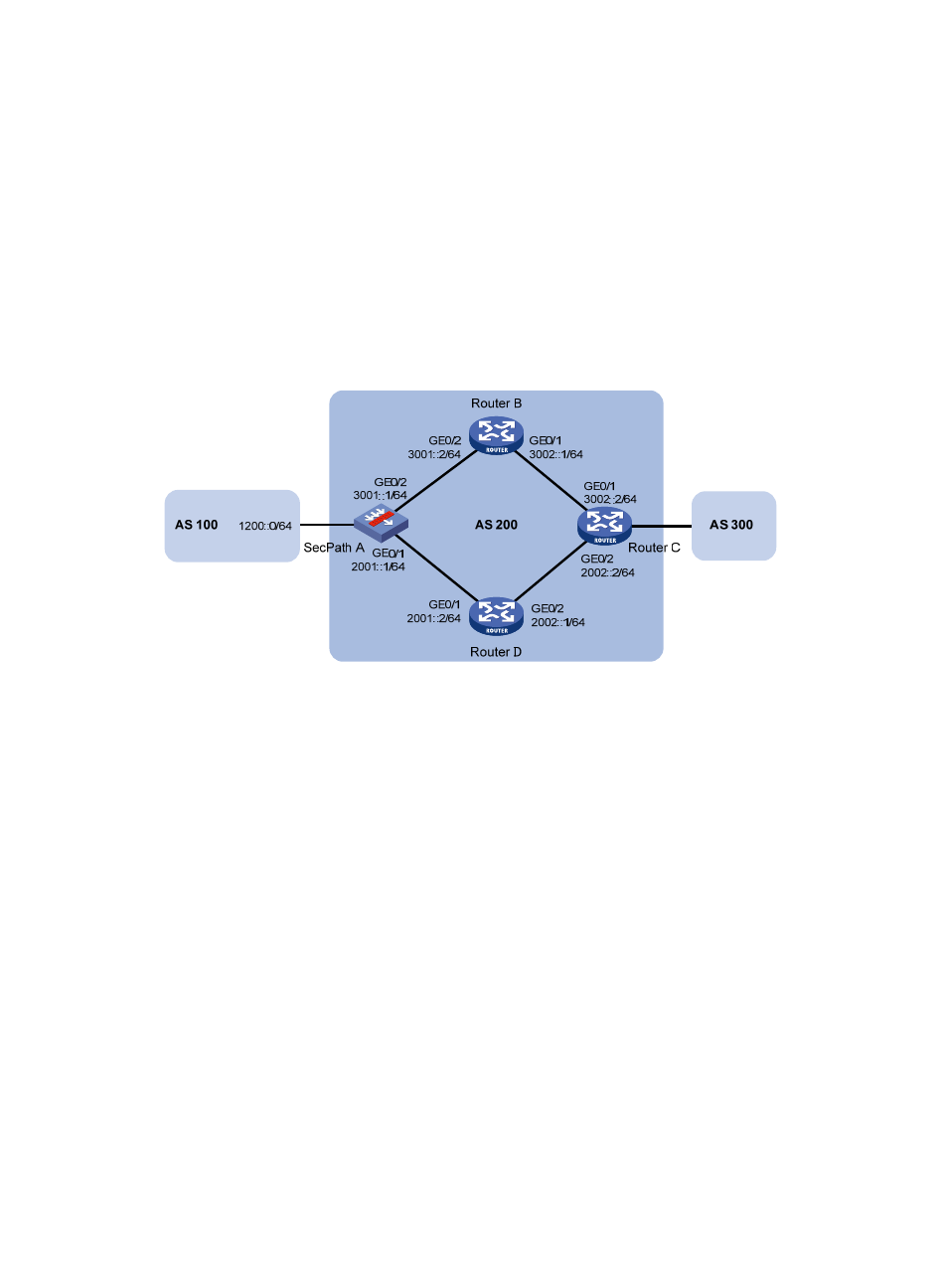Bfd for ipv6 bgp configuration example, Network requirements, Configuration procedure – H3C Technologies H3C SecPath F1000-E User Manual
Page 839

814
BFD for IPv6 BGP configuration example
Network requirements
As shown in
•
Configure OSPFv3 as the IGP in AS 200.
•
Establish two IBGP connections between SecPath A and Router C. When both links are working,
Router C adopts the link SecPath A<—>Router B<—>Router C to exchange packets with network
1200::0/64. Configure BFD over the link. Then if the link fails, BFD can quickly detect the failure
and notify it to IPv6 BGP. Then the link SecPath A<—>Router D<—>Router C takes effect
immediately.
Figure 391 Network diagram
Configuration procedure
1.
Configure IP addresses for interfaces. (Details not shown.)
2.
Configure OSPFv3 to make sure that SecPath A and Router C are reachable to each other.
3.
Configure IPv6 BGP on SecPath A:
# Establish two IBGP connections between SecPath A and Router C.
<SecPathA> system-view
[SecPathA] bgp 200
[SecPathA-bgp] ipv6-family
[SecPathA-bgp-af-ipv6] peer 3002::2 as-number 200
[SecPathA-bgp-af-ipv6] peer 2002::2 as-number 200
[SecPathA-bgp-af-ipv6] quit
# When the two links between SecPath A and Router C are both up, Router C adopts the link
SecPath A<—>Router B<—>Router C to exchange packets with network 1200::0/64. (Set a
higher MED value for route 1200::0/64 sent to peer 2002::2 on SecPath A.)
{
Create IPv6 ACL 2000 to permit 1200::0/64 to pass.
[SecPathA] acl ipv6 number 2000
[SecPathA-acl6-basic-2000] rule permit source 1200::0 64
[SecPathA-acl6-basic-2000] quit
{
Create two route policies, apply_med_50 and apply_med_100. Policy apply_med_50 sets the
MED for route 1200::0/64 to 50. Policy apply_med_100 sets that to 100.